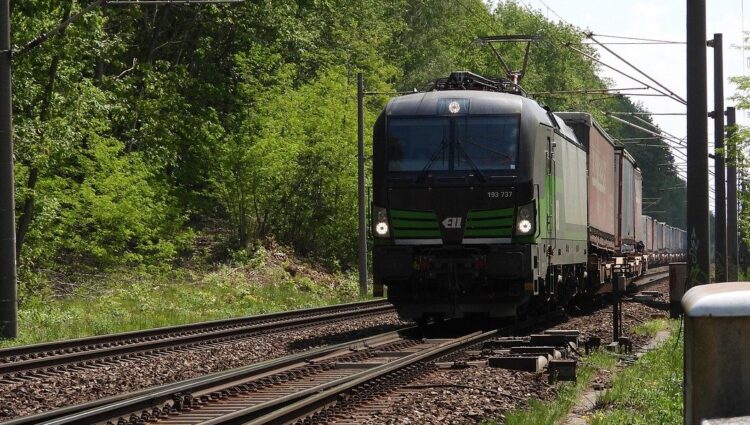The 7 Steps of a Freight Forwarding Process
Step #1: Export Haulage
Export haulage is the term which is used to refer to the shifting of items from the location of the shipper to the warehouse of the freight forwarder. This process is carried out with the help of a train or truck. The total time taken for the export haulage depends upon factors such as geographical location, distance, and the type of item that is being hauled. This first step of the freight forwarding process can take between a couple of hours to several weeks.
The responsibility of arranging an export haulage is decided as per the agreement between consignee and the shipper. If the freight forwarding companies you are working with are not providing this service, then you can make arrangements by using the services of a local transportation agency. The agency will have to take the shipment to the warehouse of the freight forwarder.
Step #2: Items Checkpoint
After the process of export haulage is complete, the second step is started which involves a freight forwarder checking to examine whether all the items were transported without any difficulties or incidents.
Step #3: Customs Clearance
Prior to the shipping of items, it is necessary to get clearance from the originating country. The process of customs clearance is carried out by customs brokers. Their job is to submit details related to the cargo as well as other supporting documents which are required.
Normally, before the required steps are performed for customs clearance, an agreement is reached between the consignee and the shipper to streamline the whole process. In the case where the freight forwarder you are working with is not providing this kind of custom clearance service then it will be necessary to search for a third party service provider who offers custom brokerage.
The customs broker submits a declaration to detail the cargo as well as provide the supporting documents. These documents tend to vary from one country to another, however the freight forwarder generally provides all the information about the kind of documents that will be required.
Step #4: Origin Handling
This consists of different activities that are performed. Freight forwarders carry out cargo receiving after it is unloaded and then placed at the staging area to be inspected and counted. Validation is carried out for the cargo by referring to booking details and the receipt is then issued to document the cargo that has arrived.
Step #5: Import Customs Clearance
After arrival of the shipment, the destination country authorities check all the necessary documents related to import customs. However, this process of checking the documents can be started before the arrival of the cargo. This task is usually performed by the designated customs broker or freight forwarder before the cargo arrives.
Customs clearance works like a declaration for the value and types of goods and the information is utilized for charging duty payments and also for registration. Unless delivered duty paid was the terms for the sold cargo, it will be the consignee’s responsibility to arrange as well as pay for the clearance.
Step #6: Arrival at Destination and Handling
After the cargo arrives, this step consists of different processes. Upon arrival, the freight forwarder will be getting all the required documents related to the cargo, that includes documentation for outstanding amounts, bills from carriers, etc.
Usually, it is the responsibility of the freight forwarder to take care of this task. Moreover, after the arrival of the cargo, the freight forwarder will have to properly transport as well as handle all the available items to make sure that no incidents damage the cargo.
The consignment is taken to the destination warehouse and then un-stuffed as well as sorted so that it can be transported or collected by the consignee. The payment for the destination handling is either made by the consignee or the shipper. In case the terms were delivered and the duty is unpaid, it is the shipper’s responsibility to arrange all the payments.
Step #7: Import Haulage
Similar to the export haulage process, the import haulage process consists of tasks related to the transportation of the cargo from the designated warehouse to the final destination of the receiver. The import haulage process can be taken care of by the freight forwarder or if required the consignee can himself collect the cargo.
If import haulage is being performed by the freight forwarder, they would be utilizing their own trucks or using the services of a 3rd party trucking company. The haulage can be through multiple hubs wherein freight forwarders optimize truck loads to improve the distribution efficiency. However, the important thing will be the agreement with respect to the time by when the cargo is to be delivered.
Unless the terms were delivered duty paid / unpaid, the responsibility to pay for the import haulage will be with the consignee. Oftentimes, it proves to be beneficial to utilize a freight forwarder for the purpose of import haulage as well, in case the shipment becomes a door delivery. In this case, the entire transportation will be the responsibility of the freight forwarder, right up to the consignee’s door. However, it will still be necessary to settle the customs duty separately so that the freight forwarder can finish the process of import haulage.
In case import haulage will not be possible for the freight forwarder, there would be different options from local markets that can be utilized. Consignee can utilize recommendations provided by the freight forwarder’s agent or the consignee can himself utilize the services of a provider he already knows about.
If you would like to get more details or assistance with freight forwarder services in Montreal then give us a call at our customer support number and our experts will try their best to explain how the whole process works.





